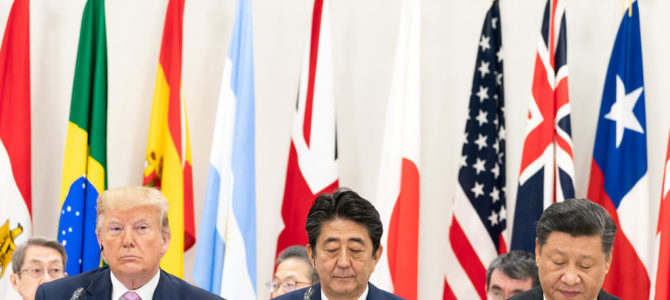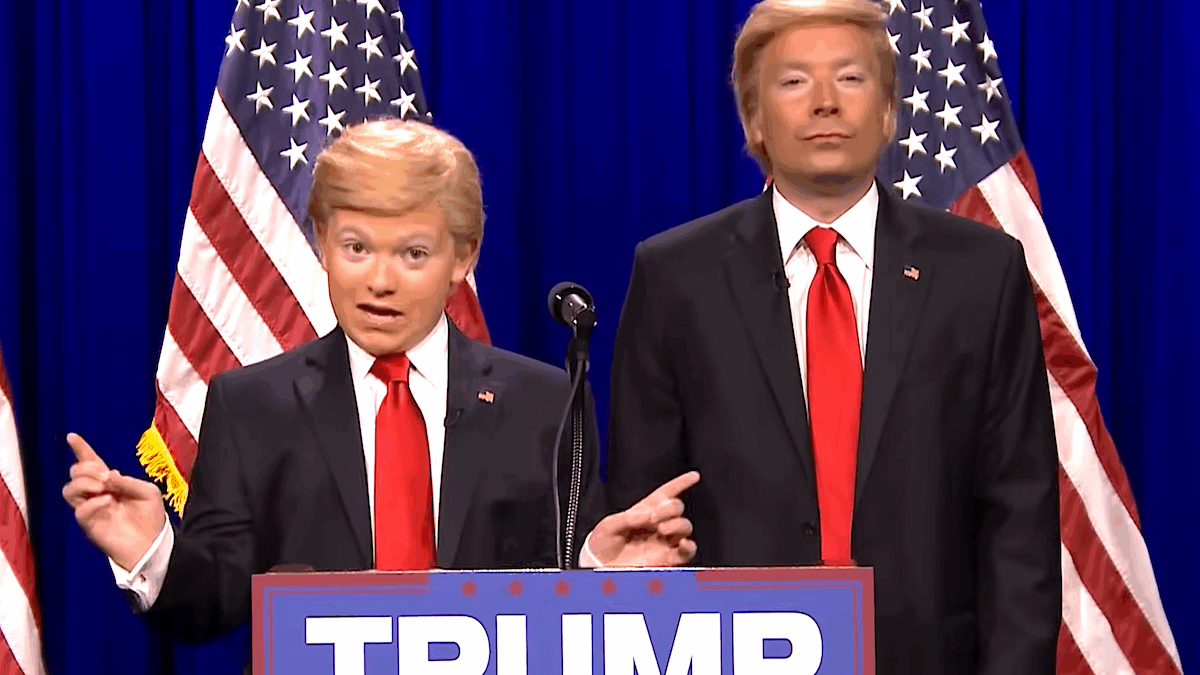
U.S. President Trump and Chinese President Xi held their highly anticipated summit at the Group of 20 meeting in Osaka, Japan on Saturday. Was it a successful meeting? That depends on whom you ask.
On the surface, the outcome of the summit is positive. Both countries called a truce on the trade war, so there won’t be further deterioration of trade relations between the two world’s largest economies for a while. Both sides also agreed to restart trade talks that have gone nowhere for quite some time. This is a welcome news for businesses and stock markets in both countries and around the world.
Prior to the summit, Beijing reportedly laid out a number of preconditions, including demanding the United States lift its ban on the sale of U.S. technology to Chinese telecommunications company Huawei and no discussion about Hong Kong’s anti-extradition bill protests. Unlike Beijing, the United States didn’t set any precondition for the summit.
Based on reports after the summit, it seems China got what it wanted and more. In addition to promising not to subject an additional US$300 billion of Chinese imports to a 25 percent tariff for now, President Trump removed the ban on American firms selling technology to Huawei; didn’t mention Hong Kong’s protest; reaffirmed the one-China principle after Xi emphasized that Taiwan is a part of China; and promised to ease the granting of visas for Chinese students and scholars. There is no evidence President Trump brought up China’s continued practice of denying visas to foreign journalists.
What did the United States get in return for all these concessions? According to President Trump, China promised to buy more U.S. farm products, although China didn’t commit to any specific dollar amount. The Wall Street Journal reported that China purchased 544,000 metric tons of soybeans right before the Trump/Xi summit. China also agrees to assist the United States with the North Korea nuclear negotiations.
China Shouldn’t Have Gotten So Much
That China got a better deal than the United States from this summit is surprising because China came to the negotiation with a weak hand. China’s economy has suffered since the trade war started: export-oriented factories are shutting down; companies are cutting back on hiring; auto sales dropped; housing sales and domestic infrastructure spending have slowed down too.
The prolonged trade war also caused many global technology companies such as Foxconn, a key supplier to Apple, to make plans to move manufacturing capacity out of China. The shift of the global tech supply chain will dampen China’s ambitious “Made in China 2025” plan, a government-directed initiative, aiming to propel China to dominance in 10 strategic high-tech sectors.
In addition to a weakening economy, Beijing is facing a political backlash as millions of Hong Kongers protest against an extradition bill with China and are demanding that the Beijing-appointed Hong Kong chief resign. Foreign leaders including U.K. Foreign Secretary Jeremy Hunt and the U.S. House Speaker Nancy Pelosi, all offered support to Hong Kong protesters. Hong Kong authorities have had to suspend the extradition bill for now.
But unsatisfied Hong Kongers continue their protests and even marched to a number of consulates of G20 nations in Hong Kong, including of the United States, United Kingdom, and Japan, asking these nations to back their push for greater freedom. No doubt Beijing regards what’s going on in Hong Kong as a huge embarrassment.
Despite the Trade War, the U.S. Economy Is Soaring
So Chinese President Xi came to the summit with serious economic and political challenges domestically. U.S. President Trump, on the other hand, was in a stronger negotiation position. While U.S. farmers also suffered from their lost export opportunity to China, the majority of the U.S. economy has shown robust growth despite the uncertainty from the U.S. and China trade war. U.S. stock markets finished the first half of 2019 with their best performance since 1997. So how did China come out of this summit looking like a winner?
President Trump likes to promote himself as a master deal maker, but his record in foreign policy has been a mixed bag. He was able to use the threat of tariffs to get Mexico to exercise more control of the inflow of illegal immigrants along the U.S./Mexico border.
However, his two previous summits with North Korea’s Kim Jong-un have resulted in little progress towards “total denuclearization” in North Korea. Despite his country’s perilous economic situation, Kim managed to be seen as an equal to the U.S. president on the international stage.
The United States and South Korea have stopped their annual military exercises. While North Korea hasn’t tested any long-range missiles or nuclear weapons, Pyongyang hasn’t stopped its nuclear weapons development and maintains at least 13 undeclared nuclear sites that can launch missiles with a capability of reaching the continental United States.
Don’t Make Evil Dictators Look Good
I applauded the president for walking away from a bad deal in the last summit in Hanoi with Kim, but I am disappointed that he has been showering Kim with praise despite Kim’s widely known brutality to his people. Then during the G20 gathering in Japan, a U.S. ally that is under direct nuclear threat from Pyongyang, President Trump sent out a surprising tweet, asking if Kim wants to meet him at the border of the demilitarized zone (DMZ) to “just to shake his hand and say Hello(?)!”
Of course Kim accepted the invitation. Why wouldn’t he? Every time Kim gets to meet the U.S. president like this, he enhances the legitimacy of himself and his murderous, authoritarian regime.
The next day, the world witnessed President Trump and Kim’s historical handshake at the DMZ. But a great photo op can’t substitute for a sound foreign policy.
While this great fanfare was going on, White House Press Secretary Stephanie Grisham reportedly got into a elbow to elbow match with overzealous North Korean security guards when she tried to get American journalists a photo opportunity with the two leaders. This side episode is a reminder how what kind of regime we are dealing with. The only comfort we can take now is that at least the two countries agreed to resume negotiation again. Like President Trump often says, we will have to see what happens.
Trade Is an Alternative to Force
The negotiations with China seems to follow a similar pattern. President Trump has had two summits with Xi. The last one took place at the G20 summit in December 2018 in Argentina. Despite a weaker position, Xi held his own and didn’t make many concessions.
Secretary of State Mike Pompeo, National Security Adviser John Bolton, Trade Adviser Peter Navarro, Chief U.S. Trade Negotiator Robert Lighthizer, and Sen. Marco Rubio all emphasize that the U.S.-China trade war is about more than trade. There are many other issues at stake, including national security, technology dominance, and cyber security.
Since the United States and China have such different social and economic systems, they see China’s unfair trade practices, forced technology transfer, and cyber theft as a serious threat to U.S. national security. They see the United States losing its edge to confront this rapidly rising one-party authoritarian state, and trade has become one of the few effective means to rebalance the economic and geopolitical power between the two countries.
That is why they won’t be satisfied if the trade war ends with China only increasing the purchase of a few airplanes and U.S. farm products like soybeans. They want to see real structural reform in China, which hopefully will result in a more open and cooperative China that plays by international rules.
This explains why President Trump’s decision to remove the technology ban on Huawei is such a disappointment to China critics like Rubio, who tweeted that “If President Trump has agreed to reverse recent sanctions against #Huawei he has made a catastrophic mistake. It will destroy the credibility of his administrations warnings about the threat posed by the company, no one will ever again take them seriously.”
Does Trump Care About Long-Term Trade Fallout?
Trump seems to share fewer of these strategic concerns. He has frequently emphasized the importance of increasing exports to China, while being quick to accommodate requests from Chinese President Xi, whom he calls a “great man” despite China’s worsening human rights records.
We shouldn’t be surprised that President Trump lifted the ban on Huawei, because he did the same for another Chinese telecom, ZTE, which some in the United States accused of posing a national security threat. Trump removed the ban on ZTE after a phone call with Chinese President Xi. In a bipartisan fashion, Congress tried to reinstate the ban on ZTE, but ended up passing a much watered down bill after heavy lobbying from the Trump administration.
Since President Trump just launched his reelection campaign, he may be motivated to resolve the trade war with China before 2020. We don’t know what the final trade deal will look like, but if the outcome of the G20 summit offers any indication, China may import more stuff from the United States, while the trade deal will likely leave many thorny issues confronting the relationship between the two countries unresolved.
Maybe it’s not fair to expect the trade deal to solve all disputes between the two countries anyway. But we do know that how the U.S.-China trade deal concludes will be a defining moment for both countries and for a new world order for many years to come.









